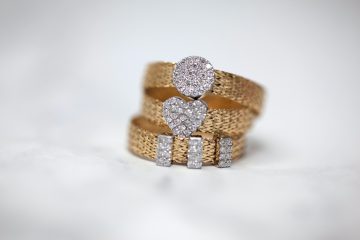When it comes to pearls, there are huge variations, versions, colors, shapes, and forms. Some real, others made in plastic. And everything in between.
Cultured pearls are real classics in jewelry such as necklaces, earrings, and bracelets and most likely you have pearls lying at home in the jewelry box.
Freshwater pearls have been cultivated for about a hundred years and most come from Southeast Asia and China. The size can vary from a button needle size to being large as a dowel wall. Pearls have been used in jewelry for a long time due to their rare nature but more importantly their shimmering and lovely look.
How to know if pearls are genuine and authentic
Firstly, it is important to know the differences between the pearls. Plastic pearls are made in plastic. With that said, they are fake. Genuine and authentic pearls are wild-grown, natural pearls. These are the rarest of them all and thus the most expensive.
Then there are cultured pearls. These pearls are natural, but the difference is that they are cultured as opposed to hunting for them in the wild. A cultured pearl is created by inserting a foreign object into the mussel which then forms a pearl substance in several layers around the object. Unlike the real pearl, the surface will be damaged on the cultured if you scratch it with a sharp knife.
However beautiful the pearls may be, not all of them are real. Fortunately, there is a simple way to find out if they are genuine or fake.
The simple method is to simply bite a little gently against the pearls, or if you have several, rub them very gently against each other. If the surface feels rough and matte against the teeth, the pearl is genuine. A false pearl, on the other hand, gives no friction to the teeth – the surface is then most likely made of plastic.
If you have a pearl necklace that consists of genuine cultured freshwater pearls then they usually have knots between the pearls. The knots are there to protect the fragile beads from abrading one another, and to prevent you from losing all the beads if the necklace breaks.
Worth knowing about fake pearls is that there are several different versions. The cheapest fake pearl is naturally the plastic pearl. However, imitation/fake pearls are completely artificial, and there are a variety of names on them. The Majorica pearl is probably the best known. They are made in such a way that a round glass ball gets a cover with a special solution made of fish scales. The beads are dipped in the solution much like when you make candles. So they do not at all consist of any mother of pearl that many people believe. The fish scales solution gives it a nice shimmering glow. Seashell beads, on the other hand, have a pearl ball as the core, and then the surface layer consists of a chemical solution. There are also many types of plastic beads on the market.



